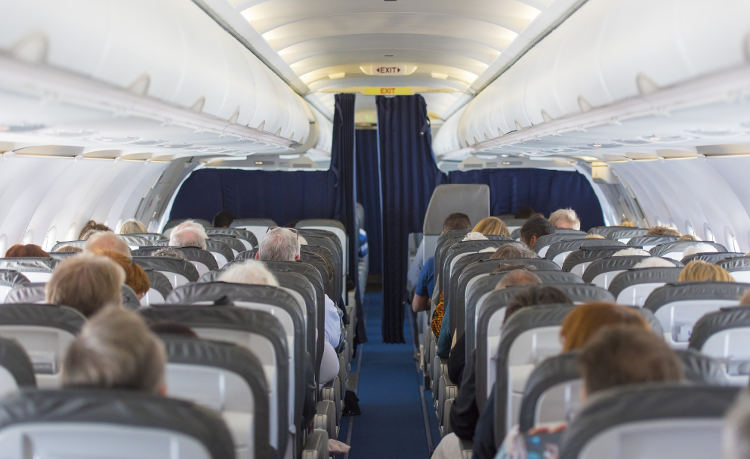Eleven years ago, Sherpa Report looked at some of the statistics regarding flying commercially – delays, cancellations, lost baggage, and so on. More than a decade later, the most recent Department of Transportation statistics can tell us whether much has changed and whether flying privately may still be a good alternative.
According to the latest Air Travel Consumer Report from the Dept of Transportation, about 80-81% of commercial flights arrived on time in March and April 2018. While this has improved since 2007, the likelihood of delay or cancellation is still probably higher than many travelers would like, especially if traveling on a tight business schedule. Other findings include:
- On-Time Arrivals. The average on-time arrival rate for April was 81.3%, an improvement of nearly 3% from one year earlier. But this still means almost one-fifth of all flights arrived more than 15 minutes past their scheduled arrival slot. Hawaiian Airlines posted the best results, with 87.7% of flights arriving on time, followed by Delta with 86.4%. At the other end of the spectrum, only 67.6% of JetBlue flights made their destination at the promised time.
- Flight Cancellations. Only 1% of scheduled domestic flights were canceled in April 2018, a slight improvement over figures from the previous year. Endeavor Air (a subsidiary of Delta) and Republic both had the highest recent cancellation rates: 2.6 and 2.5% respectively. Hawaiian Airlines had the lowest rate with just 0.1% of flights canceled.
- Tarmac Delays. If a flight delay isn’t bad enough, being stuck on the tarmac for hours can be even worse. The reports only indicate international tarmac delays of over 4 hours and domestic delays of more than 3 hours. No international flights met the criteria during March or April 2018. However, one Alaska Airlines flight from JFK to Seattle was delayed for 3 hours and 3 minutes in April, while in March passengers on an Allegiant flight from Sanford, FL to Ogdensburg, NY were stuck on the tarmac for 3 hours and 14 minutes.
- Mishandled Baggage. Even if your commercial flight departs and arrives on time, there is always the chance that your baggage won’t, or that it may be damaged upon arrival. Complaints have declined since 2007. Current figures hover around one in every 400 travelers who will experience problems.
- Animal Injuries. As more people travel with pets and service animals, a number of cases regarding deaths and injuries have been reported in the media. Within the span of one week in March, CNN reported that a bulldog died after being put in an overhead baggage compartment, two pets were loaded onto the wrong flights. One German Shepherd ended up in Japan instead of Kansas! Although the figures are very low (one injury in April, one death and two injuries reported in March), the tendency of these stories to go viral can reflect very badly on the airlines involved.
- Other Complaints. The Department of Transportation receives more than 1,100 complains every month from disappointed commercial airline travelers. Some of these are allegations of mistreatment by airline staff. In April 2018, 73 complaints were received about poor treatment of passengers with disabilities, while 6 allegations of discrimination were made. The previous month saw 60 disability-related complaints and 9 allegations of discrimination.

Compensation?
If flying within the United States, commercial airlines are not required to provide any compensation for delays, unless you are bumped from an oversold flight. If your flight is canceled, you are entitled to be booked on an alternative flight or a refund but be aware that this may be in the form of airline vouchers. Furthermore, airlines are under no obligation to provide hotels, meals, or any other compensation for delays or cancellations. While airlines are required to provide compensation for lost or delayed luggage, there is no defined amount for how much. The rules allow each airline to determine what is “reasonable”. The Department of Transportation has more information on their website.
Much More Crowded Aircraft
Another issue to be considered is comfort. Commercial airlines are trying to fit more and more people onto each flight and that means cutting legroom and narrowing seats. What was once a comfortable flight may now be anything but pleasant when you are crammed into an economy cabin with little privacy or space. According to USA Today “Average pitch in coach has narrowed from about 35 inches to 31. On some discount carriers, such as Spirit and Frontier, pitch is as low as 28 inches. Average seat width has shrunk from 18 inches to 17 inches or less.”
And in case the smaller seats weren’t enough, the number of passengers on the commercial planes has increased. In fact, passenger load factors – the ratio of passengers seats occupied per aircraft – has increased from 70% in 2002 to 84% in 2017. So yes, they are more crowded.
No wonder that reading this may make you think about flying privately, either through a private charter service or through fractional aircraft ownership. With private flights scheduled to your specific departure time, you are not at the mercy of an overbooked flight or a crowded terminal. Even mechanical issues will usually be dealt with quickly by any respectable company, allowing you to depart on time with the minimum of bother. And with customized personal service, you don’t have to feel part of a herd of cattle. Instead, you can spread out in your own cabin with meals ordered to suit your tastes. Arrive at your destination refreshed and relaxed, with your baggage and pets in hand. You’ll feel ready to enjoy your vacation or attend your business meeting.
Find more information comparing commercial and private flights here.

